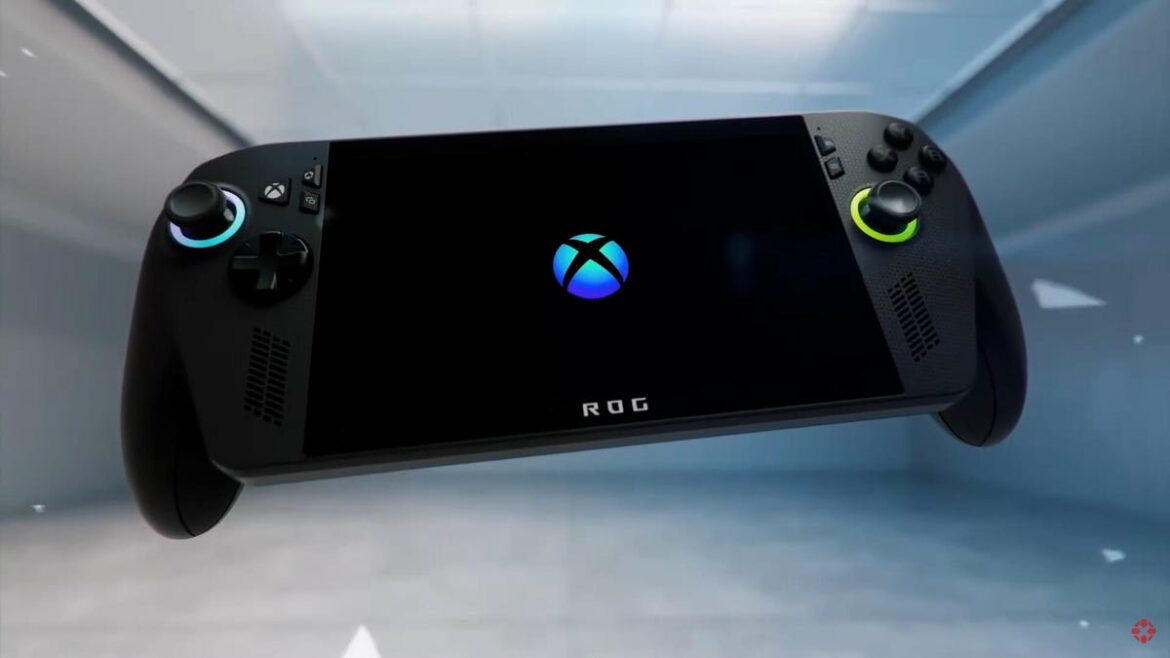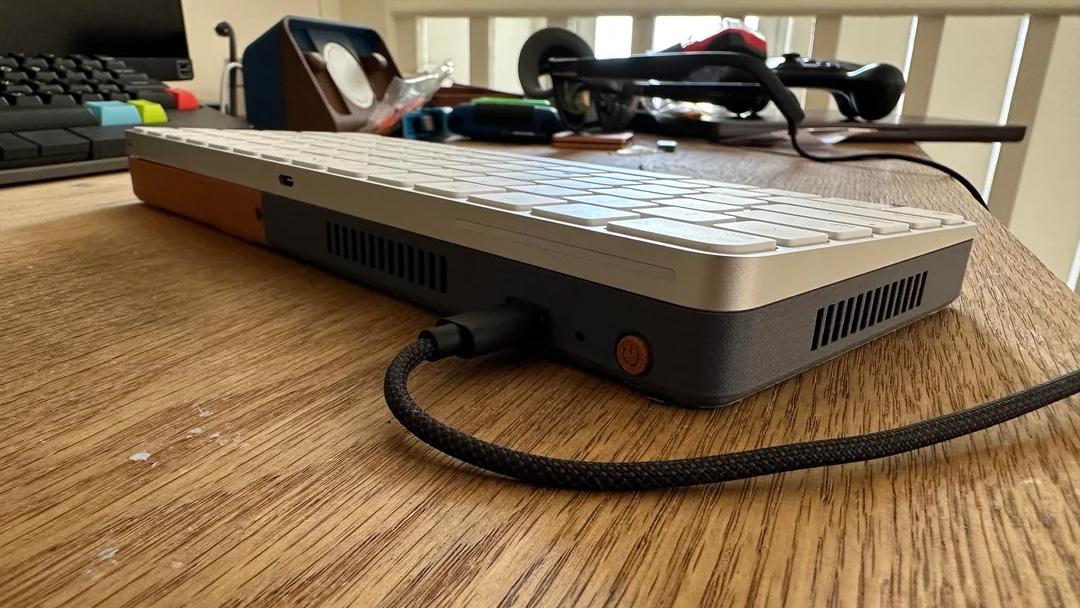The Steam Deck has yet to find a real competitor in the PC handheld gaming device battle. Other hardware companies, including Asus, Lenovo and MSI, have tried, but so far, their devices keep falling short. Asus plans to try to take another swipe at the crown, though, this time with the help of Microsoft.
In June, the two revealed their partnership for a new handheld device: the ROG Xbox Ally. This handheld will come in two variants and will attempt to bring the Xbox console experience to a portable device. Microsoft confirmed the release date for the Xbox Ally of Oct. 16 on Wednesday, but there are still some questions about the handheld.
Will the Xbox Ally outdo the Steam Deck, or will it wind up being just another wannabe?
Will you go with the Xbox Ally or Xbox Ally X?
How much will the Xbox Ally cost?
Neither Microsoft nor Asus has confirmed an official price yet. One thing for sure is that the Xbox Ally won’t be cheap.
Multiple leaks suggest the price will be 599 euros for the Xbox Ally and 899 euros for a higher-end version, the Xbox Ally X. That does leave the question of what the price will be in the US. Most likely, the price will be the same just in dollars, as that is the typical practice for gaming hardware prices.
Discount social media poster Wario64 tweeted Best Buy listings for the Xbox Ally, Xbox Ally X, charger dock, and case on Wednesday. There’s no pricing on the site for the devices, just a button to be notified when preorders become available. However, Wario64 states the pricing on the back end shows the Xbox Ally at $550 and the Xbox Ally X at $900, while the charging dock is listed on the site $100 and case for $70. The dock and case prices are on Best Buy and are accurate. It’s unclear if Microsoft changed plans at the last minute.
Best Buy has listed ROG Xbox Ally listings (no preorders yet)
Ally ($549.99) https://t.co/nmHw6Nxov3
Ally X ($899.99) https://t.co/Dts0GcUNFW
100W Charger Dock (HDMI 2.0, USB-A, USB-C) ($99.99) https://t.co/LkoKyunOE8
Case $69.99 https://t.co/jaTIBfWUXX
Confirming… pic.twitter.com/oalzcOON77
— Wario64 (@Wario64) August 20, 2025
Microsoft didn’t immediately respond to a request for comment about the post.
The uncertainty about the price of the Xbox Ally is likely due to tariffs. Microsoft recently increased the prices of its Xbox Series consoles and Asus has done the same with its laptops and its current ROG Ally lineup.
When does the Xbox Ally come out?
Microsoft did confirm the release date of the Xbox Ally on Oct. 16. This date was mentioned in previous leaks regarding the handheld device’s price.
When can I preorder the Xbox Ally?
Preorders are not available as of yet. In the blog post about the release date, Microsoft says preordering and pricing will be announced sometime in the future. Best Buy does have the listings for the Xbox Ally, Xbox Ally X, charging dock and case, and those interested can request to be notified when preorders become available.
What’s the difference between the Xbox Ally and Xbox Ally X?
There are two versions of the Xbox Ally: the lower-priced Xbox Ally and the higher-priced Xbox Ally X.
The key differences between the two are in their processors, storage and memory. The Xbox Ally will have the AMD Ryzen Z2 A Processor, while the Xbox Ally X will use the faster AMD Ryzen AI Z2 Extreme Processor. Memory will be different, with the lower-priced Xbox Ally having 16GB of LPDDR5X-6400 and the higher-cost handheld coming with 24GB LPDDR5X-8000. Both will come with SSD storage but the Xbox Ally will have 512GB and the Xbox Ally X will have 1TB. The Xbox Ally X will also come with a bigger battery but with a faster processor and more memory. It’s not clear if that difference in capacity translates to a longer battery life.
Specs for Xbox Ally and Xbox Ally X
ROG Xbox AllyROG Xbox Ally X Operating System Windows 11 HomeWindows 11 HomeControls and grip Contoured grips inspired by Xbox Wireless Controllers deliver all-day comfort. ABXY buttons / D-pad / L & R Hall Effect analog triggers / L & R bumpers / Xbox button / View button / Menu button / Command Center button / Library button / 2x assignable back buttons / 2x full-size analog sticks / HD haptics / 6-axis IMUContoured grips inspired by Xbox Wireless Controllers deliver all-day comfort, complete with impulse triggers for enhanced control. ABXY buttons / D-pad / L & R impulse triggers / L & R bumpers / Xbox button / View button / Menu button / Command Center button / Library button / 2x assignable back buttons / 2x full-size analog sticks / HD haptics / 6-axis IMUProcessor AMD Ryzen Z2 A ProcessorAMD Ryzen AI Z2 Extreme ProcessorMemory 16GB LPDDR5X-640024GB LPDDR5X-8000Storage 512GB M.2 2280 SSD for easier upgrade1TB M.2 2280 SSD for easier upgradeDisplay 7-inch, 1080p, IPS, 500 nits, 16:9; 120Hz refresh rate, FreeSync Premium; Corning Gorilla Glass Victus + DXC Anti-Reflection7-inch, 1080p, IPS, 500 nits, 16:9; 120Hz refresh rate, FreeSync Premium; Corning Gorilla Glass Victus + DXC Anti-ReflectionI/O Ports 2x USB-C (2 x DP 2.1, PD 3.0), 1x microSD, 1x analog audio2x USB-C (1x USB4, 1x USB 3.2 both w/ DP 2.1, PD 3.0), 1x micro SD, 1x analog audioNetwork and Communication Wi-Fi 6E (2 x 2), Bluetooth 5.4Wi-Fi 6E (2 x 2), Bluetooth 5.4Dimensions 29.1×12.2×5.1 cm29.1×12.2×5.1 cmWeight 670g715gBattery 60Wh80WhIncluded ROG Xbox Ally 65W charger StandROG Xbox Ally X 65W charger Stand
What makes the Xbox Ally different from the Steam Deck?
The most notable difference between the Xbox Ally and the Steam Deck is the operating system. Like the ROG Ally, the Xbox Ally will also use Windows 11, while the Steam Deck uses Valve’s SteamOS.
Even though every PC game works with Windows, handheld gaming devices running Windows have had serious issues, as the OS implementation has been a bit buggy. Portable consoles like the ROG Ally, MSI Claw and Lenovo Legion Go simply don’t run well with full Windows because the OS is designed for laptops and desktops and not handheld devices. SteamOS, however, is designed to run almost every game on Steam without issues and regardless of device size.
The Xbox Ally changes that by giving it an Xbox interface. This would be similar to how the Xbox app on PCs works for running games. It would also be able to download Xbox games directly to it, remote play them off a console or stream them via Xbox Cloud.
Watch this: Xbox ROG Ally, the Xbox Handheld, Is Real and I Played It
04:05
Another big difference is the hardware. The Steam Deck came out in 2022 and it was the first mass-produced handheld gaming device for PC. At the time, Valve had to use custom AMD processors but since then, AMD has produced more processors for handheld devices, which are now much more powerful in just a few years. The Xbox Ally would also have faster RAM. Both the improvement in processors and RAM should significantly increase the number of games the Xbox Ally can run versus the Steam Deck, which is already struggling to run newer games at 30fps.
Externally, the Xbox Ally will come with the same size 7-inch display but it will have a higher refresh rate of 120Hz, a brighter screen at 500 nits and increased resolution at 1080p. There will also be some slight differences in the physical size of the Xbox Ally, which will be a little bigger and heavier. Another difference from the Steam Deck is that the Xbox Ally controls will be more similar to the Xbox controller.
Microsoft and Asus have a large hill to climb if they plan to have the Xbox Ally dethrone the Steam Deck. It will be especially tough if Valve decides to announce the Steam Deck 2 soon.










